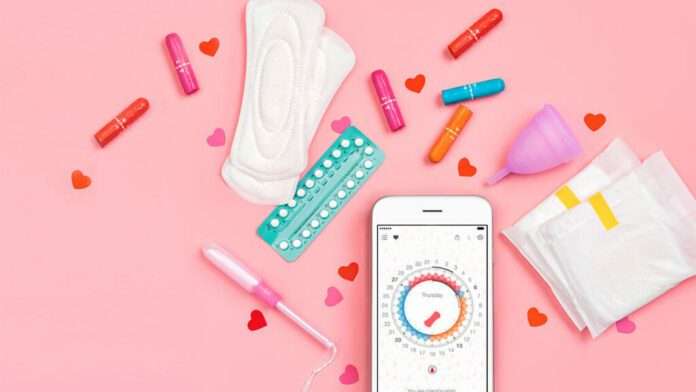Menstruation is generally considered unclean in each family and society. Isolation for 7 days, followed by social and ritual restrictions imposed on them to reinforce a negative attitude towards menstruation. Previous knowledge before menarche is very low among girls in all the urban slums. Mothers are considered the primary informants for the girls on menstrual hygiene during their tender age. During menarche, social prohibitions/stigma, cultural restrictions like no entry to temples and participation in religious activities, food taboos, negative attitude of parents in the family openly block the access of adolescent girls to the right to information on reproductive health.
Myths, misconceptions, blind beliefs, and taboos eventually lead to discrimination among girls and boys in the family and society. Infections like RTI, STI, etc., due to a lack of genital hygiene during menstruation, were reported by all stakeholders. More than 90% of adolescent girls use ready-made sanitary pads when they go out of their homes. Due to poor economic conditions, adolescent girls wear traditional clothes when they reside in their homes.
The major brands include Khushi, Pari, Comfy, Whisper, Stayfree, Nine, etc. The cost of the sanitary napkins varies between INR 20 to INR 36, consisting of 6 to 7 pads. Khushi sanitary pads, which are very popular among adolescents and are supplied free of cost by the State Government. This is done through the Department of Health and Family Welfare.
The sanitary pads are distributed through the various Government schools to the adolescent girls every Saturday. Each adolescent girls from 7th class onwards get 2 Khushi pads every month in their school, though it is inadequate for many girls. The distribution happens only when the school is running. During vacations, lockdown, and shutdown periods, the girls did not receive these, and sometimes, the distribution is irregular. In private schools, the teachers collect INR 5 from each girl from the 7th standard onwards to buy the pads for the girls to use during emergency time.
Safe disposal of used sanitary pads (absorbents) is a challenge in society. The used pads, along with household garbage, are collected regularly by BMC mobile vans in the slums. ASHA workers are not provided with an adequate number of sanitary pads for distribution among dropouts and out-of-school girls. Many adolescent girls participate in the ADWIKA programme (awareness on genital hygiene, personal hygiene, and MHM) conducted by the ICDS supervisor and Anganwadi workers. Provision of dustbins, handwash, phenyl, brush, and water facilities are available for girls in all Government schools.
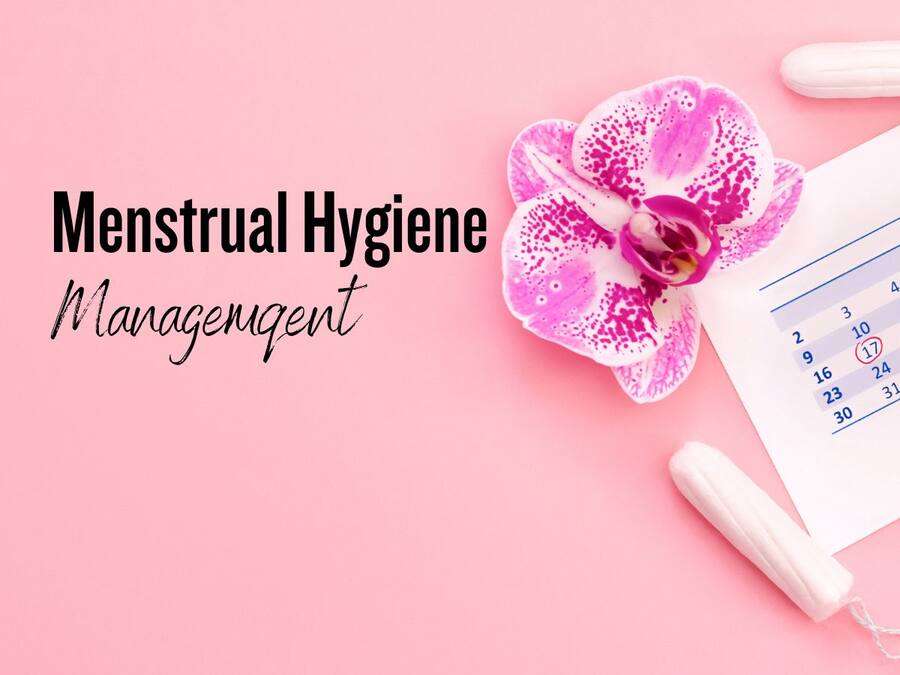
Introduction and Background
Menstrual hygiene management (MHM) is a common problem for all adolescent girls in low and middle-income communities in rural and urban slums across the country, particularly when attending school because of Poor water, sanitation and hygiene (WASH) facilities in schools, inadequate puberty education and lack of hygienic or Menstrual hygiene management items (absorbents) cause girls to experience menstruation as shameful and uncomfortable. Always the adolescent girls experience humiliation and fear from the leaking of blood and body odor, which sometimes leads menstruating girls to absent themselves from school.
Many girls do not understand what menstruation is. They fail to understand that their periods are a regular biological function. Lack of access to pharmacies and menstrual products also pushes them to resort to unhygienic alternatives. Regressive norms and beliefs surrounding the issue add up to the concept of periods becoming a taboo; as a result, some women refrain from using menstrual products at all.
These barriers can be overcome by the joint efforts of government, corporate sectors, non-profits, and other non-government sectors, the entertainment industry, etc. Women should give importance to intimate hygiene, no matter what stage their lives are at, or regardless of their age. Instruct them to use hygiene products like various nonharmful soaps, detergents, disinfectants in maintaining genital hygiene regularly and during menstruation, and preventing itchiness and bacterial infection in the genital area. It also helps in the growth of good hygienic practices.
Cultural taboos add to girls’ difficulties, preventing them from seeking help and imposing restrictions on their diet and activities when menstruating. Insufficient MHM may result in health symptoms involving the urinary and genital tracts. Recent international concern for MHM, spearheaded through work to improve WASH in schools, has focused on the need for dignity and privacy, on raising awareness to break the silence and stigma, making safe and effective MHM absorbents accessible, and improving the school WASH environment. It also includes separate toilets for girls, water and cleansing materials, and safe disposal of absorbent materials.
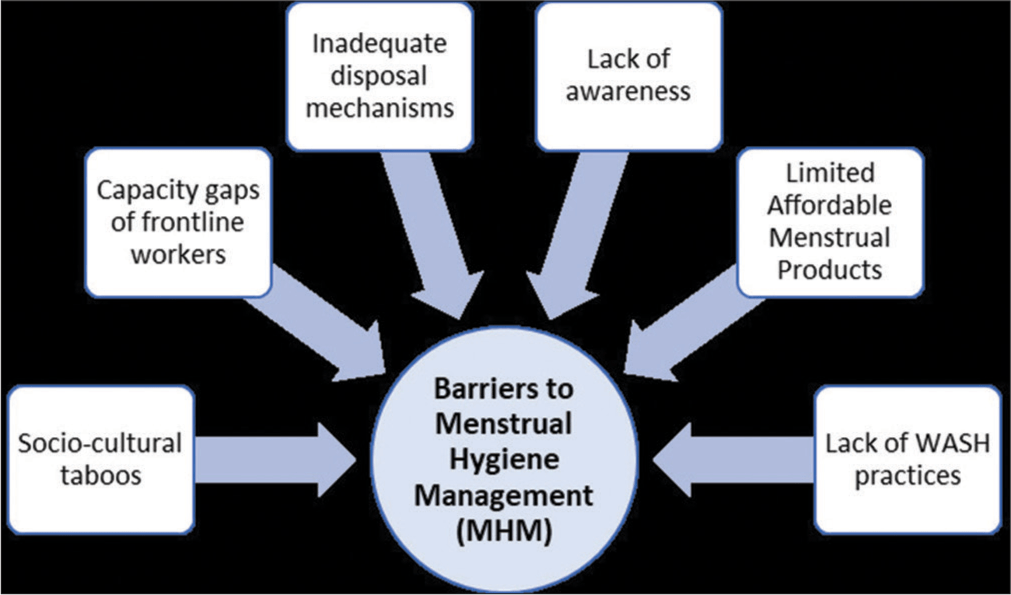
India is a country of contrasts, with extreme wealth and poverty and gender-related disparities, resulting in significant variation in health and social indicators among adolescent girls and young women. Adolescent girls attending schools with poor MHM practices and cultural taboos are considered to be impediments to their school attendance.
Considering the relevance of menstrual hygiene management to the health, well-being, and educational achievements of girls, the Government has initiated policies and programs, implemented at the state level. Numerous MHM studies have been independently conducted across India, examining the prevalence of social, educational, and health problems faced by girls with poor MHM determine unmet and priority needs, and to develop a package of interventions for schoolgirls.
The Ministry of Health and Family Welfare has introduced a scheme for the promotion of menstrual hygiene among adolescent girls in the age group of 10-19 years in rural areas. The major objectives of the scheme are: to increase awareness among adolescent girls on Menstrual Hygiene, to increase access to high-quality sanitary napkins to adolescent girls in rural areas, and to ensure safe disposal of Sanitary Napkins in an environmentally friendly manner.
Period is generally considered sick in each family and society. Insulation for 7 days, followed by social and ritual restrictions, helps them cope with negative stress during the period. Former knowledge previous to menarche is veritably low among girls in all the civic slums. Maters are considered the main snitchers for the girls on menstrual hygiene among girls during their tender age. During menarche, social proscriptions smirch, artistic restrictions like no entry to tabernacles and share in religious conditioning, food taboos, negative station of parents in the family, openly block the access of adolescent girls to the right to information on reproductive health.
Myths, misconceptions, empty beliefs, and taboos ultimately lead to demarcation among girls and boys in the family and society. Infections like RTI, STI, etc., due to a lack of genital hygiene during the period, were reported by all stakeholders. further than 90% of adolescent girls use store aseptic pads when they go out of their homes.
Due to poor profitable conditions, adolescent girls use traditional clothes when they live in their homes. The major brands include Khushi, Pari, Comfy, Whisper, Stayfree, Nine, etc. The cost of the aseptic towels varies between INR 20 to INR 36, consisting of 6 to 7 pads. Khushi aseptic pads, which are veritably popular among adolescents and are supplied free of cost by the State Government. This is done through the Department of Health and Family Welfare.
The aseptic pads are distributed through the colorful Government seminaries to the adolescent girls every Saturday. Each adolescent girls from 7th class onwards get 2 Khushi pads every month in their seminaries, though it’s shy for numerous girls. The distribution happens only when the academy is running. During the recess, lockdown, and arrestment period, the girls didn’t admit these, and eventually, the distribution was irregular. In private seminaries, the preceptors collect INR 5 from each girl from the 7th standard onwards to buy the pads for the girls to use during exigency time.
Safe disposal of used aseptic pads( absorbents) is a challenge in society. The used pads, along with ménage scrap, are collected regularly by BMC mobile vans in the slums. ASHA workers aren’t handed with acceptable number of aseptic pads for distribution among dropouts and out-of-academy girls. Numerous adolescent girls share in the ADWIKA programme( mindfulness on genital hygiene, personal hygiene, and MHM) conducted by the ICDS administrator and Anganwadi workers. Provision of sties, handwash, phenyl, enclosures, and water installations are available for girls in all Government seminaries.
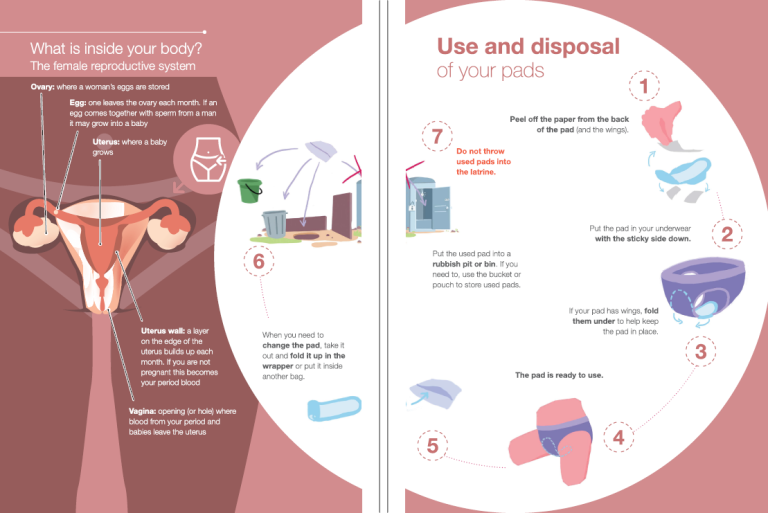
Preface and Background
Menstrual hygiene operation( MHM) is a common problem for all adolescent girls in low and middle- income communities in pastoral and civic slums across the country, particularly when attending academy because of Poor water, sanitation and hygiene( marshland) installations in seminaries, shy puberty education and lack of aseptic or Menstrual hygiene management particulars( absorbents) beget girls to witness period as opprobrious and uncomfortable. Always the adolescent girls experience demotion and fear from the oohing of blood and body odor, and occasionally lead menstruating girls to absent themselves from the academy.
Numerous girls don’t understand what a period is. They fail to understand that their ages are a regular natural function. Lack of access to apothecaries and menstrual products also pushes them to resort to hygienic measures.
Accumulative morals and beliefs surrounding the issue add up to the conception of ages getting a taboo; as a result, some women refrain from using menstrual products at all.
These walls can be overcome by the common sweat of government, commercial sectors, non-profits, and other non-government sectors, the entertainment industry, etc. Women should give significance to intimate hygiene no matter what stage their lives are at or anyhow of their age. Instruct them to use hygiene products like colorful non-hazardous detergents, cleansers, and disinfectants in maintaining genital hygiene regularly and during periods and precluding itchiness and bacterial infection in the genital area. It also helps in the growth of good aseptic practices.
Cultural taboos add to girls’ difficulties, precluding them from seeking help and putting restrictions on their diet and conditioning when menstruating. Inadequate MHM may affect health symptoms involving the urinary and genital tracts. Recent transnational concern for MHM, driven by work to ameliorate WASH in seminaries, has concentrated on the need for quality and sequestration, on raising mindfulness to break the silence and shame, making safe and effective Menstrual hygiene management absorbents accessible, and perfecting the academic marshland terrain. It also includes separate toilets for girls, water and sanitation accoutrements, and safe disposal of sanitary accoutrements.
India is a country of contrasts, with extreme wealth and poverty and gender- related differences, exhibiting significant variations in health and social indicators among adolescent girls and young women. Adolescent girls attending seminaries, with poor MHM practices and artistic taboos considered to be impediments to their academic attendance.
Considering the applicability of MHM to the health, good, and educational achievements of girls, the Government has initiated programs and programs, enforced them at the state level. Multitudinous MHM studies have been conducted across India, examining the frequency of social, educational, and health problems faced by girls with poor MHM determine unmet and precedence requirements, and to develop a package of interventions for girls.
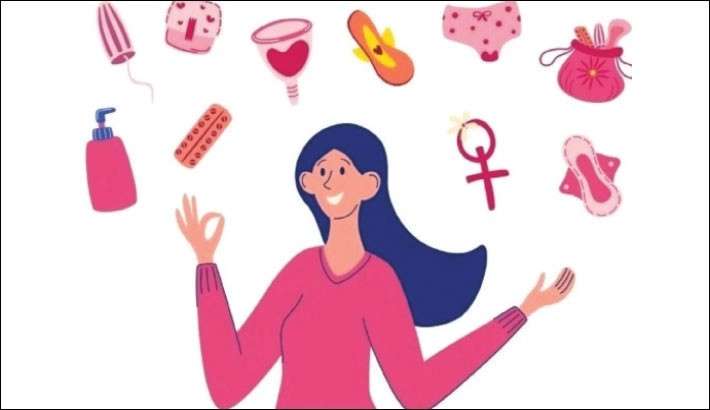
The Ministry of Health and Family Welfare has introduced a scheme for the creation of menstrual hygiene among adolescent girls in the age group of 10- 19 years in pastoral areas. The major objectives of the scheme are to increase mindfulness among adolescent girls on Menstrual Hygiene, to increase access to high-quality aseptic towels for adolescent girls in pastoral areas, to ensure safe disposal of Sanitary Towels in an environmentally friendly manner, and to have a safe Menstrual hygiene management routine.
Girls are usually taught by their mothers the basics of menstruation and become accustomed to particular products. But it is remarkable that with advanced technology and awareness, some women have a multitude of options to choose from. It should be noted that this preference for using a certain type of menstrual product is highly dependent on one’s personal choice, cultural and social stigmas, availability of products at the nearby pharmacy stores, and on one’s economic status.
The older generation of women, particularly in rural areas, uses washable cloths during their periods. Though eco-friendly, they are unhygienic if not washed properly after every single use. Tampons are expensive and are mostly used by women and girls who are into strenuous physical activities. Another alternative to tampons and pads is a menstrual cup. It is made up of medical level silicone rubber that can be folded during insertion into the vagina. These are eco-friendly and cost-effective. The urgent question, however, is: Why is menstrual hygiene or Menstrual hygiene management not given enough importance? The problem focuses on three aspects: Lack of awareness, access, and acceptance.
Also Read – Healthy Habits: Menstrual Hygiene


